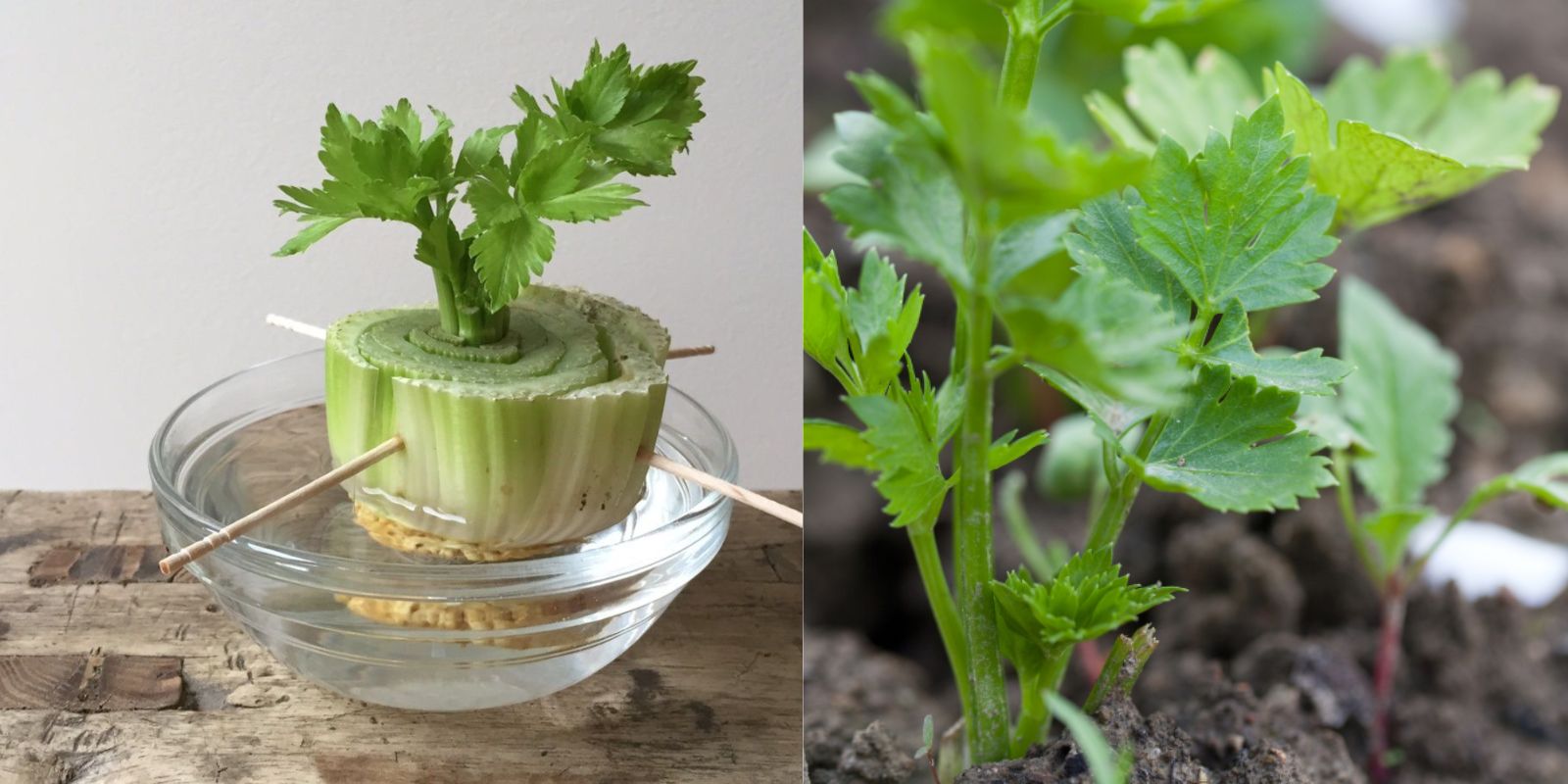Celery is a versatile vegetable that adds crunch and flavor to many dishes, but growing it can be a bit tricky, especially for beginners. However, with the right guidance, you can cultivate a thriving crop of celery in your garden. This article will walk you through seven essential tips to help you avoid common mistakes and achieve a successful harvest.
1. Choose the Right Variety for Your Climate
One of the first steps to successfully growing celery is selecting the right variety for your climate. Celery varieties vary in their tolerance to temperature and growing conditions, so it’s essential to choose one that suits your local environment. For example, ‘Tall Utah’ is a popular variety that grows well in a wide range of climates, while ‘Golden Self-Blanching’ is better suited for cooler areas.
When selecting a variety, consider your region’s average temperatures during the growing season. Celery thrives in cool weather, so it’s best to plant it in early spring or late summer, depending on your climate. Choosing the right variety ensures your celery plants are more likely to thrive and produce healthy, robust stalks.
2. Prepare the Soil Properly
Celery is a heavy feeder and requires nutrient-rich, well-drained soil to grow effectively. Before planting, prepare your soil by enriching it with plenty of organic matter, such as compost or well-rotted manure. This not only provides essential nutrients but also improves soil structure, which is crucial for celery’s shallow root system.
The soil should also have a pH level between 6.0 and 7.0. If the pH is too low or too high, celery plants may struggle to absorb the necessary nutrients. You can test your soil’s pH with a home testing kit and adjust it if necessary by adding lime to raise the pH or sulfur to lower it.
3. Plant at the Right Time
Timing is critical when it comes to planting celery. As a cool-season crop, celery prefers temperatures between 55°F and 70°F (13°C and 21°C). If planted too early or too late, celery may bolt (go to seed) or become stunted.
For spring planting, start seeds indoors about 10-12 weeks before the last expected frost date. Transplant the seedlings into the garden once the danger of frost has passed and the soil has warmed up slightly. In warmer climates, you can also plant celery in late summer for a fall harvest, allowing it to mature as temperatures cool.
4. Water Consistently
Consistent watering is one of the most important factors in growing healthy celery. Celery has a high water content, and its shallow roots make it particularly sensitive to water stress. The soil should be kept evenly moist, but not waterlogged, to prevent the plants from drying out or becoming too soggy.
Water your celery regularly, especially during dry spells, to maintain consistent soil moisture. If the plants do not receive enough water, they may become tough and stringy. Conversely, overwatering can lead to root rot and other issues. A drip irrigation system or soaker hose can be very effective in providing consistent moisture without over-saturating the soil.
5. Fertilize Regularly for Strong Growth
Celery is a heavy feeder, meaning it requires regular fertilization to sustain its growth. To ensure your celery plants receive the nutrients they need, apply a balanced fertilizer every two weeks throughout the growing season. A fertilizer high in potassium and phosphorus, but not too high in nitrogen, will promote healthy root and stalk development.
Organic fertilizers, such as compost tea or fish emulsion, are excellent choices as they provide a steady release of nutrients and improve soil health over time. Be cautious with high-nitrogen fertilizers, as too much nitrogen can lead to excessive leaf growth at the expense of stalk development.
6. Mulch to Retain Moisture and Suppress Weeds
Mulching is a simple yet effective way to maintain soil moisture, regulate temperature, and suppress weeds around your celery plants. Apply a layer of organic mulch, such as straw, grass clippings, or compost, around the base of the plants once they are established. This mulch will help retain moisture in the soil, reducing the frequency of watering and keeping the roots cool.
Mulch also helps prevent weeds from competing with your celery plants for nutrients and water. However, be sure to keep the mulch away from the base of the celery stalks to prevent rot.
7. Monitor for Pests and Diseases
Celery can be susceptible to a variety of pests and diseases, including aphids, slugs, and fungal infections. Regular monitoring of your plants will help you catch any problems early before they become severe.
Aphids are small, sap-sucking insects that can weaken celery plants and spread disease. They can be controlled with insecticidal soap, neem oil, or by introducing beneficial insects like ladybugs into your garden. Slugs, which can chew holes in the leaves and stalks, can be managed with slug traps, barriers, or organic slug pellets.
Fungal diseases, such as leaf spot or early blight, can be minimized by ensuring good air circulation around the plants and avoiding overhead watering. If you notice any signs of disease, remove affected leaves and treat the plants with a suitable fungicide.
Conclusion
Growing celery may require a bit more attention to detail than other vegetables, but the results are well worth the effort. By choosing the right variety, preparing your soil properly, planting at the right time, and following these essential tips, you can enjoy a bountiful harvest of crisp, flavorful celery. Remember, consistent care and attention to your plants will go a long way in ensuring their success. So, give these tips a try and watch your celery thrive! Share your experience and any additional tips in the comments below – your insights could help fellow gardeners achieve their best crop yet! 🌱

